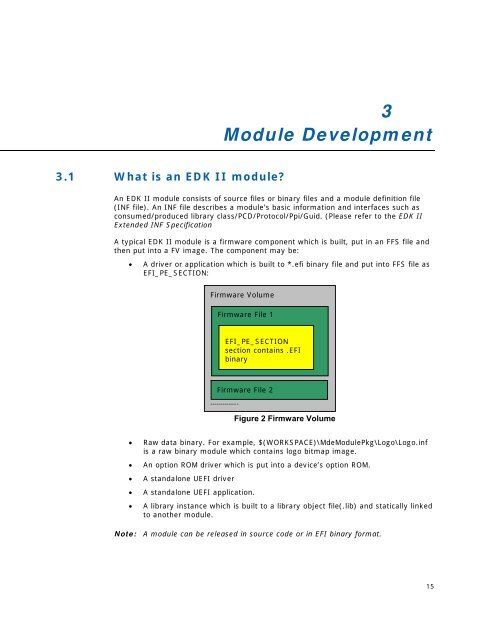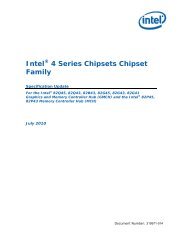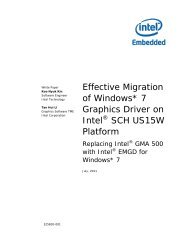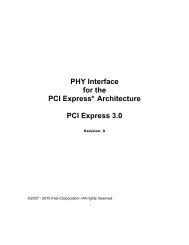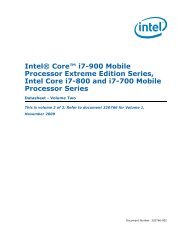EDK II Module Writer's Guide - Intel
EDK II Module Writer's Guide - Intel
EDK II Module Writer's Guide - Intel
- No tags were found...
You also want an ePaper? Increase the reach of your titles
YUMPU automatically turns print PDFs into web optimized ePapers that Google loves.
3<strong>Module</strong> Development3.1 What is an <strong>EDK</strong> <strong>II</strong> module?An <strong>EDK</strong> <strong>II</strong> module consists of source files or binary files and a module definition file(INF file). An INF file describes a module’s basic information and interfaces such asconsumed/produced library class/PCD/Protocol/Ppi/Guid. (Please refer to the <strong>EDK</strong> <strong>II</strong>Extended INF SpecificationA typical <strong>EDK</strong> <strong>II</strong> module is a firmware component which is built, put in an FFS file andthen put into a FV image. The component may be:• A driver or application which is built to *.efi binary file and put into FFS file asEFI_PE_SECTION:Firmware VolumeFirmware File 1EFI_PE_SECTIONsection contains .EFIbinaryFirmware File 2…………..Figure 2 Firmware Volume• Raw data binary. For example, $(WORKSPACE)\Mde<strong>Module</strong>Pkg\Logo\Logo.infis a raw binary module which contains logo bitmap image.• An option ROM driver which is put into a device’s option ROM.• A standalone UEFI driver• A standalone UEFI application.• A library instance which is built to a library object file(.lib) and statically linkedto another module.Note: A module can be released in source code or in EFI binary format.15


